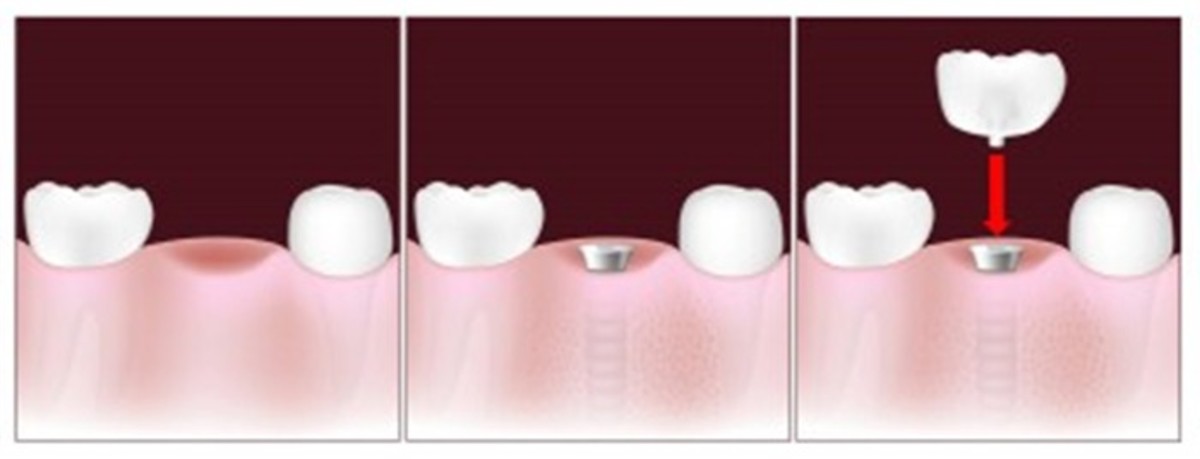The Bionic Man: Reality (Yes, the Six Million Dollar Man Comes Alive)

Most everyone remembers the 1970s TV shows “The Six Million Dollar Man” and “The Bionic Woman,” which have become cannons of the popular science fiction genre and pop culture icons with technological improvements. However, nearly a quarter of a century later, these once far-fetched ideas are becoming a reality for many people. Like in the shows, the ethics of biometric implants continue to rage on among technologists and the differently-abled community, both.
Regardless, there are now living examples of successful bionic implants throughout the developed world, many of whom would otherwise be struggling with debilitating conditions, otherwise. Perhaps the most interesting development are those who are willing to accept technological implants to improve working organs and limbs. Once the stuff of sci-fi, the bionic implant is now becoming a reality.
Bionic/Machine Man - The Surprisingly Long History
There have been ideas to implant machines into human beings since the 19th century, when the very first forays into electrically stimulating the heart were made. For instance, by the 1880s, experiments proving that the heart muscle could be controlled with electric impulses had already been successfully performed in Great Britain.
Even Leonardo DaVinci had imagined prosthetic limbs fitted with gears that he designed based upon his own dissection experiments, using the human body as a guide as early as the 15th century. A prominent foundation to support bionic innovation bears his name to this day.
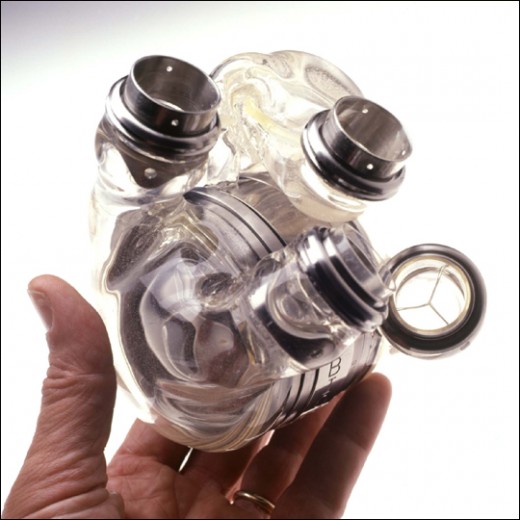
Reworking the Heart
Just 60 years later, the first pacemakers were implanted in people – some of them have extended lives by several decades. These devices weren't fully contained, but did reach into the body, sometimes being powered by radio-isotopes or rechargeable batteries. However, even more ambitious plans to implant entire artificial organs were already in the works by the 1950s.
The first forays into implanting an actual bionic organs were also baby steps, such as the JARVIK-7 artificial heart that was successfully implanted in 1982, extending the life of the first recipient Dr. Barney Clark, by just 112 days. But subsequent improvements have turned this curiosity and surgery of last resort into a viable option.
Since the early 1980s, nearly 350 people have received this type of mostly-contained artificial heart with lifespans of several years. Since 2001, artificial hearts such as the AbioCor device have been engineered that are fully self-contained, with a lifespan of up to two years – often long enough to find a suitable donor.
Bionic Eyes and Bionic Ears
Even more ambitious is the replacement of sensory organs. All five classical senses of sound, sight, touch, taste and smell have bionic implant counterparts, though they are still in the infancy stage. Some, such as the visual input tongue sensor, use one sensory organ to interpret input that would otherwise be handled by another. With even a short training period, the human mind is flexible enough to make the translation on the fly.
Other sensory devices include an actual bionic eye that uses an electronic sensor that amplifies visual images from the existing eye to remaining sensor cells. While bionic technology was once represented as being entire machines that replace human limbs, the current trend in bionics is to use what remains of the body's systems, even if it's just a few remaining cells.
Perhaps the oldest and most well-known bionic sensory organ is the cochlear implant, that has assisted with hearing since the late 1960s. Not just an amplifier like other hearing aids, this bionic ear transmits signals directly to auditory nerves, allowing even many of the profoundly deaf to have some sense of hearing. Over 100,000 people worldwide have benefited from these implants as of the late 'aughts.
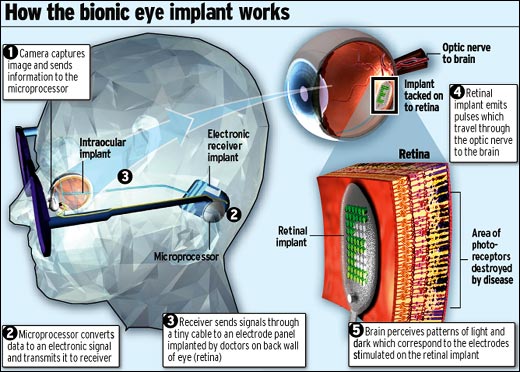
New Limbs For Old
Especially important for the millions of people who've lost limbs due to accidents or birth defects are the innovations in bionic limbs. While people have used prosthetic limbs in one form or another for centuries, the peg legs of 18th century whalers are a far cry from the modern limbs that now include fully grasping hands and fully articulated feet.
While an entire bionic leg that is capable of propelling a human faster than the average automobile remains the stuff of fiction, these limbs are now able to be fully integrated into the body system and can even be maneuvered by thought alone, with some practice. Full articulation of limbs and bio-feedback of pressure data are the avenues that are currently receiving the most attention.
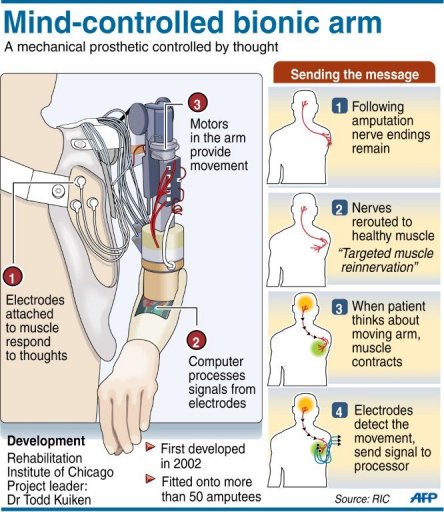
Technical Difficulties
Most researchers cite the biggest problems to installing fully-working bionic implants is the challenge of mitigating infection by installing fully contained devices, working batteries that don't require yearly replacement and managing the electronically-challenging landscape of a saline body.
Pacemakers, for instance, must be replaced every few years because batteries still aren't able to function for long enough. Even when supplemented by new technologies such as taking current directly from the body to recharge, their lifespan is only about 5 years, at best. One advance has shown the ability for devices to convert and use ubiquitous radio frequency waves as power.
It is likely that the revolution in tiny, nano-tech implants encased in polymers may be the way to keep leads and wires from being slowly eaten away by the body itself. Even the often-used plates and pins that doctors have used to hold severely broken bones together for decades are not immune to being literally “eaten” by the body over many years. Continuing work on the merging of polymer and nano technology are at the forefront of emerging research on how to overcome these problems.
The Future of Bionics
In the next few decades, the research that has brought bionic implants this far is poised to make even more impressive gains. One potential breakthrough is the use of a contact lens that can double as a thought-controlled and fully mobile heads-up display. Made possible by recent innovations in nanotechnology, these devices have already been tested on animals, with human trials scheduled to begin as early as 2010.
Another emerging field of bionics is the ability to implant a device to monitor a patient's health and even regulate the delivery of drugs as needed. Such devices are small enough to run on the electrical current of the body itself and could make bulky monitoring equipment obsolete.
It is likely that the biggest innovations in the widespread use of bionic implants will occur when people are able to merge data gathering and super-human abilities with these devices. There are already a small contingent of people who are already willing to be the first recipients of fully roboticized limbs, eyes and even pieces of their minds.
Unlike what has been portrayed by many of the cyberpunk fictions of the late 20th century, it is also unlikely that the ability to download an entire mind into a computer. Likewise, knowledge such as a second language or university-level coursework that may be dumped directly into the mind will be a reality in the next few decades, since the brain itself remains something of a mystery.
For more information on the newest totally contained artificial heart systems, the AbioCor company provides this tutorial on how their product works:
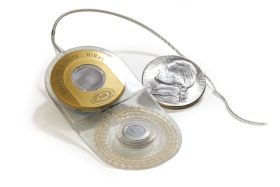
The bionic ear company...
- en - The Cochlear Implant Technology Innovation Leader | Advanced Bionics
The HiResolution Bionic Ear System is the only cochlear implant system that can provide HiResolution sound to children and adults with severe or profound hearing difficulties.
This hub brought to you....
by Julie-Ann Amos, professional writer, and owner of international writing agency www.ExquisiteWriting.com
Why not create your own HubPages? It's fun and you can make revenue from Adsense and other revenue streams on your pages. JOIN HUBPAGES NOW - SIMPLY CLICK HERE...
This work is licenced under the Creative Commons Attribution-Non-Commercial-No Derivative Works 3.0 Unported License. To view a copy of this licence, visit http://creativecommons.org/licenses/by-nc-nd/3.0/ or send a letter to CreativeCommons, 171 Second Street, Suite 300, San Francisco, California94105, USA


